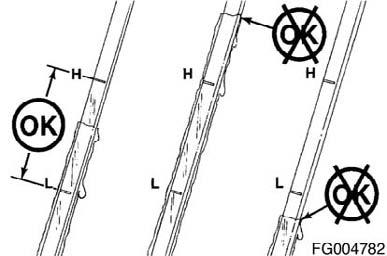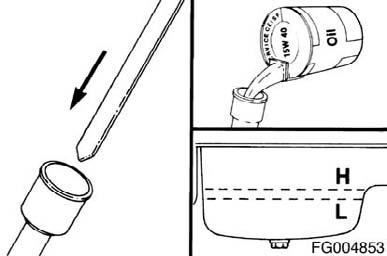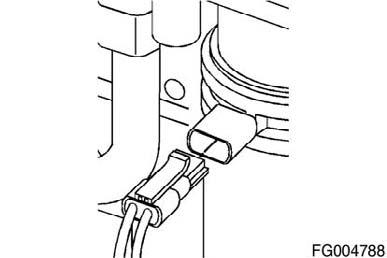
5 minute read
Maintenance Procedures at Daily Interval
Daily Maintenance Procedures - Overview
General Information
Preventative maintenance begins with day-to-day awareness of the engine and its system. Before starting the engine, check the oil and coolant levels. Look for: • Leaks • Loose or damaged parts • Worn or damaged belts • Any change in engine appearance. • Odor of fuel
Engine Operation Report
The engine must be maintained in top mechanical condition if the operator is to get optimum satisfaction from its use. The maintenance department needs daily running reports from the operator to make necessary adjustments in the time allocated. The daily running report also helps to make provisions for more extensive maintenance work as the reports indicate the necessity. Comparison and intelligent interpretation of the daily report, along with a practical follow-up action, will eliminate most failures and emergency repairs. Report to the maintenance department any of the following conditions: • Low lubricating oil pressure • Low power • Power increases or engine surge • Erratic or no accelerator control or response • Any warning lights flashing or staying on • Abnormal water or oil temperature • Unusual engine noise • Excessive smoke • Excessive use of coolant, fuel, or lubricating oil • Any fuel, coolant, or lubricating oil leaks • Loose or damaged parts • Worn or damaged belts
QSL9CumminsEng QSL9 Cummins Engine Page 67
Unusual Engine Noise
During daily maintenance checks, listen for any unusual engine noise that can indicate that service is required.
Figure 53
Air Intake Piping
Maintenance Check
Visually inspect the intake piping daily for wear points and damage to piping, loose clamps, or punctures that can damage the engine. Replace damaged pipes, and tighten loose clamps, as necessary, to prevent the air system from leaking. Torque Value: 8 Nm [72 in-lb] Check for corrosion under the clamps and hoses of the intake system piping. Corrosion can allow corrosive products and dirt to enter the intake system. Disassemble and clean, as required.
Fan, Cooling
Inspect for Reuse
WARNING!
Do not rotate the engine by pulling or prying on the fan. The fan blade(s) can be damaged and cause the fan to fail and cause personal injury or property damage. Use the accessory drive shaft or the crankshaft barring tool to rotate the crankshaft. Figure 54
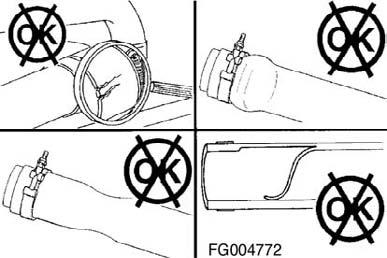
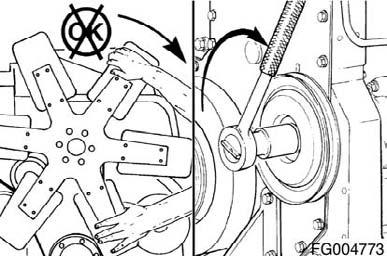
Figure 55
QSL9 Cummins Engine Page 68 QSL9CumminsEng
A visual inspection of the cooling fan is required daily. Check for cracks, loose rivets, and bent or loose blades. Check the fan to make sure it is securely mounted. Tighten the cap screws, if necessary.
Replace original equipment fan that is damaged with a fan of the identical part number. Cummins Inc. must approve any other fan changes to be covered under warranty. Refer to the vehicle or equipment manufacturer's specifications for cap screw torque.
WARNING!
Do not straighten a bent fan blade or continue to use a damaged fan. A bent or damaged fan blade can fail during operation and cause personal injury or property damage. Figure 56
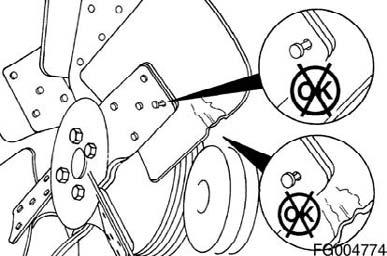
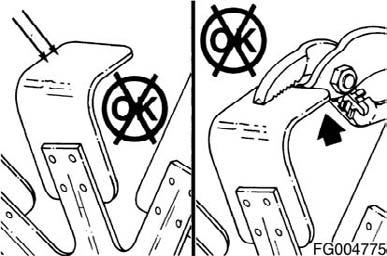
Figure 57
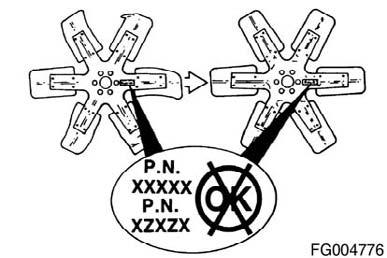
Figure 58
Crankcase Breather Tube
Maintenance Check
Inspect the breather tube for sludge, debris, or ice in the tube. Inspect the tube more frequently in icy conditions.
QSL9CumminsEng Figure 59
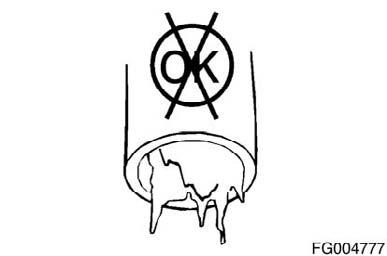
QSL9 Cummins Engine Page 69
Maintenance Check
WARNING!
Do not remove a pressure cap from a hot engine. Wait until the coolant temperature is below 50°C [120°F] before removing the pressure cap. Heated coolant spray or steam can cause personal injury. Figure 60
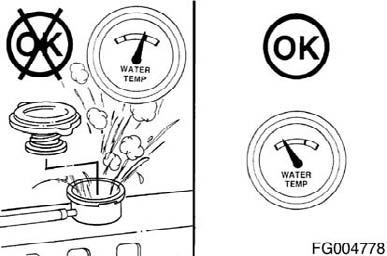
CAUTION!
Never use a sealing additive to stop leaks in the cooling system. This can result in cooling system plugging and inadequate coolant flow, causing the engine to overheat.
The coolant level must be checked daily.
CAUTION!
Do not add cold coolant to a hot engine. Engine castings can be damaged. Allow the engine to cool to below 50°C [120°F] before adding coolant.
Make up coolant added to the engine must be mixed with the correct proportions of antifreeze, supplemental coolant additive, and water to avoid engine damage. Coolant recommendations and specification details on correct mixing of coolant can be found in Maintenance Specifications (Section V). Fill the cooling system with coolant to the bottom of the fill neck in the radiator fill or expansion tank. NOTE: Some radiators have two fill necks, both of which must be filled when the cooling system is drained.
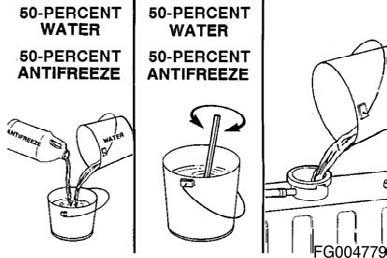
Figure 61
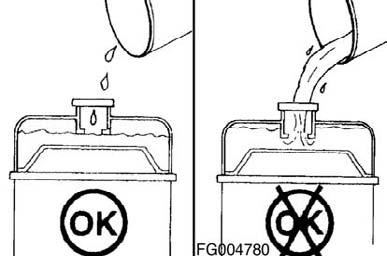
Figure 62
QSL9 Cummins Engine Page 70 QSL9CumminsEng
Drain
WARNING!
Drain the water-fuel separator into a container and dispose of in accordance with local environmental regulations.
Cummins Inc. requires a fuel-water separator or fuel filter be installed in the fuel supply system. Drain the water and sediment from the separator daily.
Spin-on Type Shut off the engine. Use your hand to open the drain valve. Turn the valve counterclockwise approximately 3 1/2 turns until the valve drops down 25.4mm [1 in] and draining occurs. Drain the filter sump until clear fuel is visible.
To close the valve, lift the valve and turn clockwise until it is hand-tight.
CAUTION!
When closing the drain valve, do not overtighten the valve. Overtightening can damage the threads.
Lubricating Oil Level
Maintenance Check
CAUTION!
Never operate the engine with oil level below the L (low) mark or above the H (high) mark. Poor engine performance or engine damage can occur.
The engine must be level when checking the oil level to make sure the measurement is correct. Shut off the engine for an accurate reading. Wait at least 15 minutes after shutting off the engine to check the oil level. This allows time for the oil to drain into the oil pan.
Priming pump
Primary fuel filter & cartridge
Figure 63
Drain plug
FG0004942
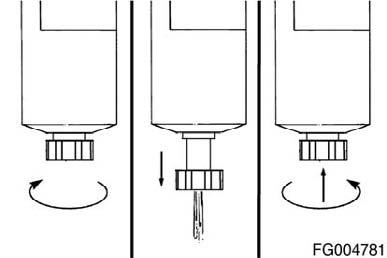
Figure 64
